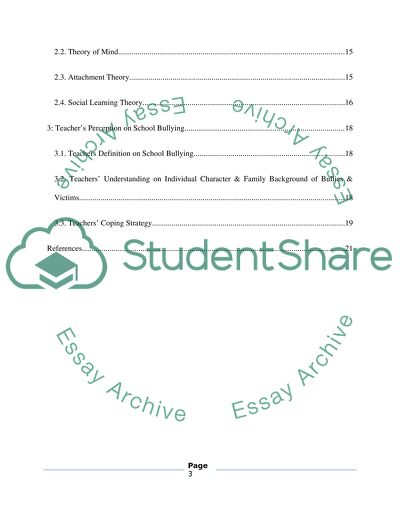Cite this document
(“Middle School Teachers' Understanding of School Bullying in Mainland Literature review”, n.d.)
Middle School Teachers' Understanding of School Bullying in Mainland Literature review. Retrieved from https://studentshare.org/education/1399810-middle-school-teachers-understanding-of-school-bullying-in-mainland-china
Middle School Teachers' Understanding of School Bullying in Mainland Literature review. Retrieved from https://studentshare.org/education/1399810-middle-school-teachers-understanding-of-school-bullying-in-mainland-china
(Middle School Teachers' Understanding of School Bullying in Mainland Literature Review)
Middle School Teachers' Understanding of School Bullying in Mainland Literature Review. https://studentshare.org/education/1399810-middle-school-teachers-understanding-of-school-bullying-in-mainland-china.
Middle School Teachers' Understanding of School Bullying in Mainland Literature Review. https://studentshare.org/education/1399810-middle-school-teachers-understanding-of-school-bullying-in-mainland-china.
“Middle School Teachers' Understanding of School Bullying in Mainland Literature Review”, n.d. https://studentshare.org/education/1399810-middle-school-teachers-understanding-of-school-bullying-in-mainland-china.


